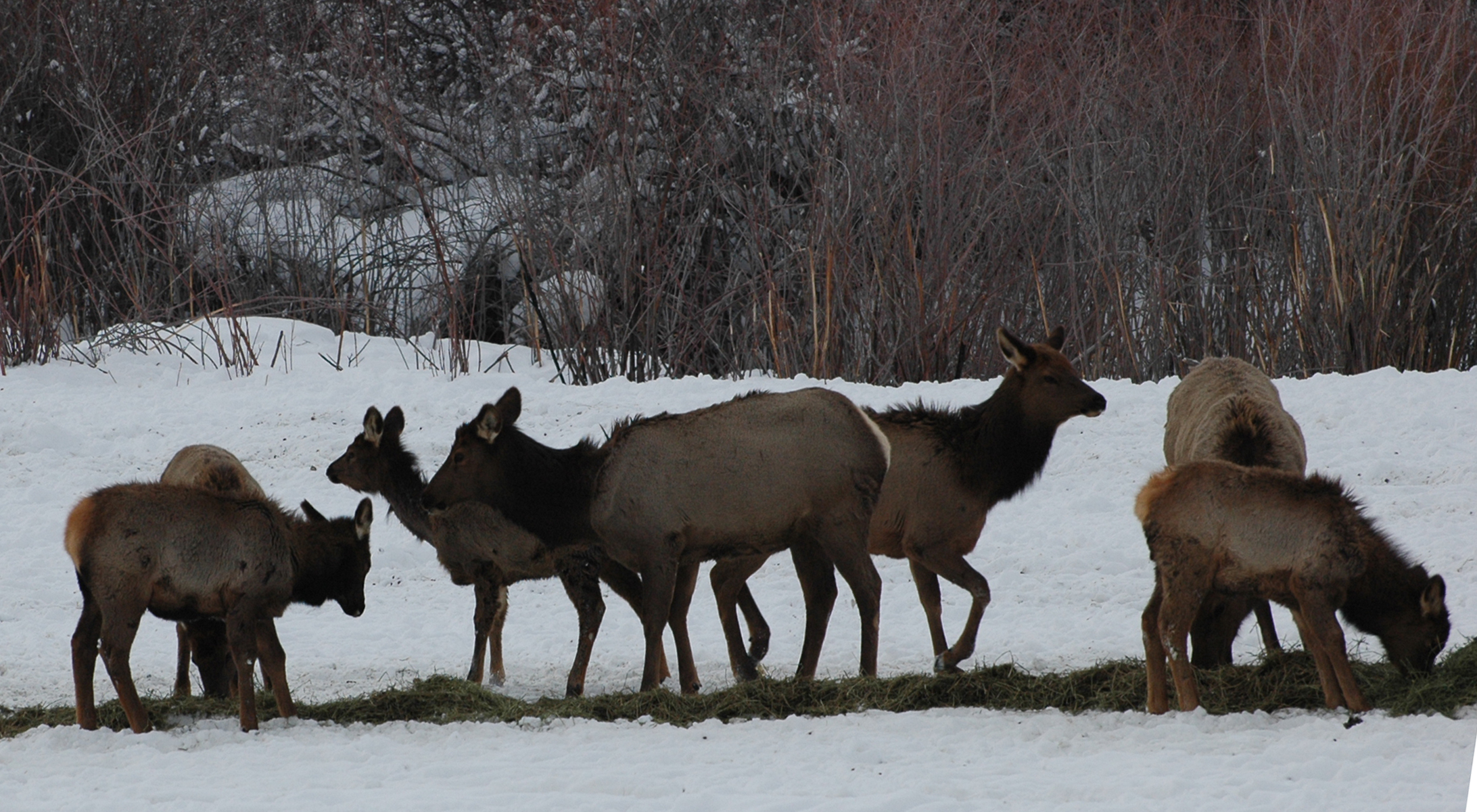
How Winter Big Game Feeding Works
IDAHO FALLS – If the prognostications of Punxsutawney Phil in Pennsylvania carry any weight in Idaho, then we are set for six more weeks of winter. After having a number of milder winters in a row, this year’s winter seems harsh, even though it is pretty typical for what used to be considered a normal winter.
While humans have been inconvenienced, big game animals have become more noticeable as they seek to deal with the conditions.
As winter persists, the Idaho Department of Fish and Game has started to get more questions from concerned citizens about winter feeding of deer, elk, and even pronghorns.
“We are concerned about the welfare of big game animals in challenging winter conditions," said Jim White, regional supervisor for Fish and Game's Upper Snake Region. "The decision to feed or not to feed wildlife in winter is based on many factors, some of which include winter conditions that are measured weekly by staff throughout the region."
Each region in the state has adopted a specific set of criteria that can be measured on a site by site basis to determine how winter conditions are progressing. Reaching specific criteria values does not automatically trigger winter feeding, but it does serve to begin the process of determining when and where winter feeding could occur.
These criteria take into account both human and natural factors. They include actual or imminent threat of depredation to private property; threat to public safety, including traffic hazards; excessive mortality affecting the recovery of big game herds; and limited or unavailable winter forage caused by fire or unusual weather.
Other important indicators are daytime temperatures, snow depth, and snow crusting. Severe crusting can require animals to burn more energy to travel through snow access and forage. All these indicators are correlated to deer and elk body condition. Both visual observations and physical measurements taken during winter capture operations are used to determine if feeding is necessary.
In order to implement a winter feeding program, Fish and Game must declare an emergency based on environmental and biological conditions, working in consultation with regional winter feeding advisory committees. The winter feeding advisory committee for the Upper Snake Region includes five members representing landowner, sportsman, and business interests. As local residents, advisory committee members are tuned into local conditions and work closely with Iish and Game to decide on how to specifically address each potential feeding situation.
Currently, a large-scale emergency feeding operation of over 3,000 elk is underway at Tex Creek Wildlife Management Area. The main purpose of this site is to mitigate for forage destroyed by the Henrys Creek Fire this summer, and hopefully, reduce the potential for human conflicts. A much smaller feeding operation is now starting for mule deer that have traditionally congregated east of Idaho Falls near the mouth of Henrys Creek. Feeding is being done to reduce potential conflicts and not because of nutritional concerns at this time. This herd has grown this year to about 300 animals due to the deer displaced by the fire. Near Arco, Fish and Game is also working to address concerns over pronghorns that have moved onto Highway 20.
For more information about winter big game feeding, call the Upper Snake Region Office at 208-525-7290. Additional information about winter big game feeding can be found on Fish and Game's website at http://fishandgame.idaho.gov/cms/hunt/biggame/feed.cfm.

